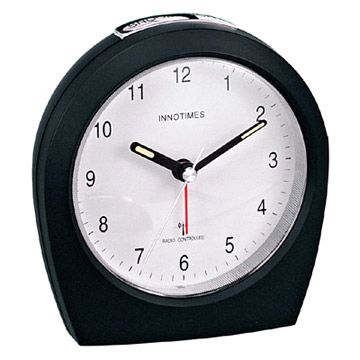The Brew Clock

The brew clock is an ordinary
analog clock that can be easily reset. It does not need an alarm feature. A brew
clock like the one above can keep your brew day on schedule, and can allow one
brewer to take over for another brewer at any time during the brewing process,
and know exactly where the first brewer was in the process.
I learned to use a brew clock at Triple Rock Brewing Co. in Berkeley, California. I have used a brew clock ever since.
The basic idea, is that basic tasks during the brew day take place at exactly the same "brew clock" time during any brew. Real time is irrelevant. The brewer can start the brew day at 6:00 am or 10:00 pm, and at the same stage in the process, the brew clock would be at the same time.
I use the brew clock according to these directions. You can make up your own:
Noon - As soon as I am done mashing in, I set the brew clock to noon. Since most of my beers require a one-hour mash, I will know when to recirculate or begin lautering by looking at the brew clock. If I am making a beer that requires a 1.5 hour mash, I set the brewclock to 11:30 at this point. AM or PM are irrelevant.
12:50 - If you want a 10-minute vorlauf or recirc, begin it at 12:50 on the brew clock.
1:00 - Begin to run off the mash into the kettle. I begin my sparge water here as well. If you begin sparging ten minutes into the lauter, you'll know to begin sparging at 1:10.
3:00 - At this point my lauter is complete and my kettle is coming to a boil. It may begin to boil a few minutes before or after 3:00. Once your boil has begun and you have thrown in your first hops, reset the brew clock to 3:00.
4:10 - My second hops are added 20 minutes before the end of the 90 minute boil. Therefore they are added at 4:10 on the brew clock. I watch the clock and I'm careful to weigh out my second hops before 4:00 so I am ready.
4:30 - End of boil. I add my third/last hop addition now and begin to whirlpool in the kettle. I am careful to weigh out my third hop addition right after I add the second hops. This is also where I add Fermcap S and Whirlfloc if needed.
4:35 - I turn off the whirlpool.
4:55 - Send wort to fermenter: I do a 5 minute whirlpool and 20 minute whirlpool rest, so this is when I begin to transfer my hot wort through the heat exchanger, oxygenate it, and send it to the fermenter. You will have to adjust your "brewery time" on your brew clock to reflect your actual procedures.
5:00 - This is where I repitch my yeast cone-to-cone.
5:15 - Normally, this is where the new beer is all put to bed in the fermenter, and final cleaning commenses.
6:30 - 7:00 The brewery is normally cleaned up by now. I finish up any additional work, set everything for tomorrow's brew, and go home.
---
Try the brew clock and see if you like it. I find it useful in training new brewers. There are additional timed goals you can set using the brew clock, such as, "Finish cleaning and sanitizing the fermenter by XX time."
Best wishes for a successfully timed brew day!
